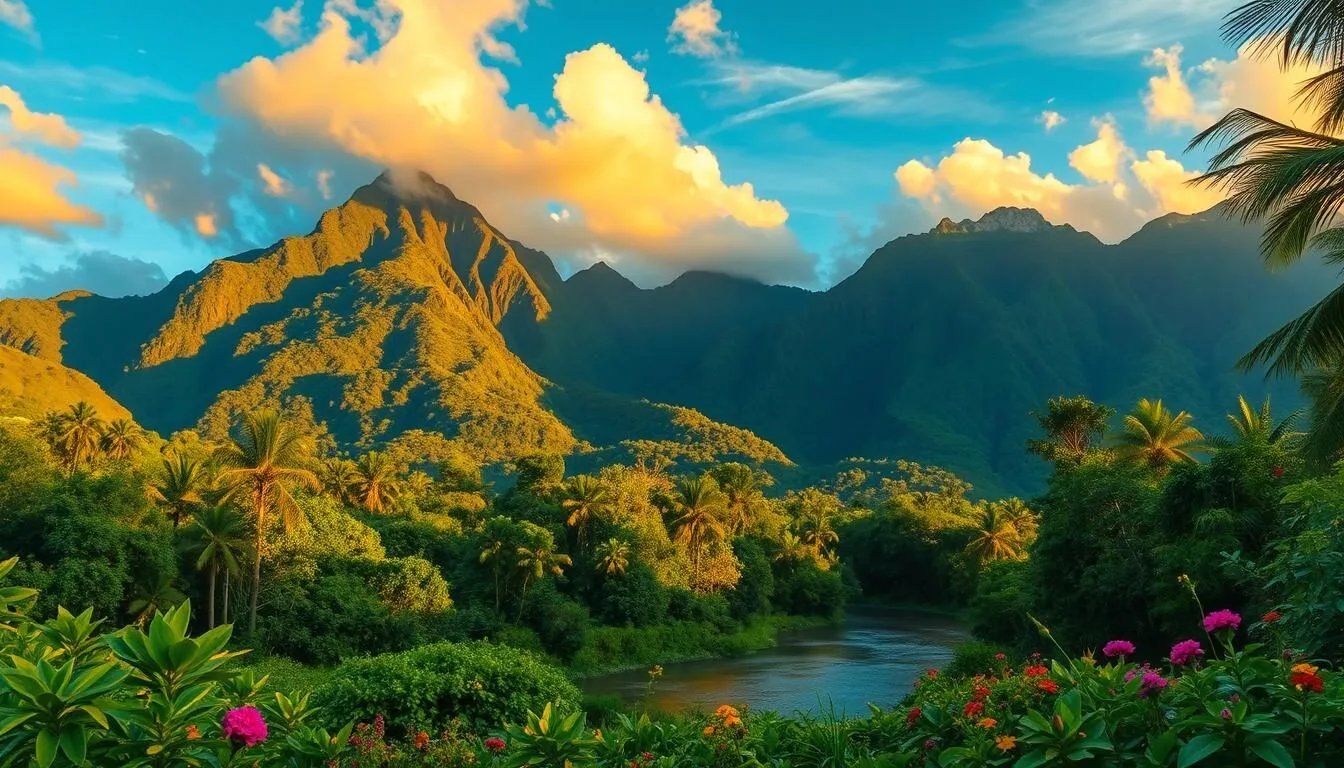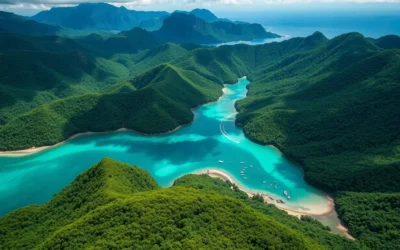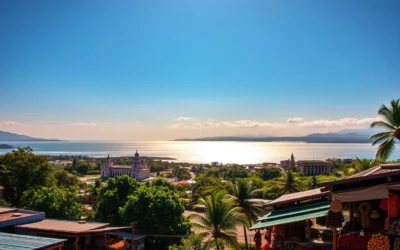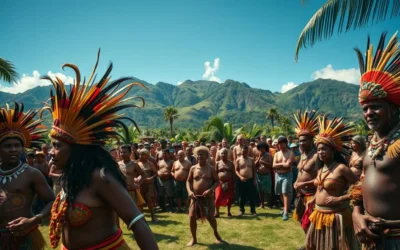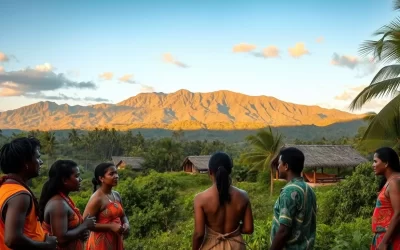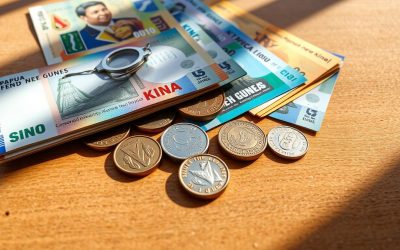✓ Accommodations✓ Flights✓ Rental Cars✓ Tours & Activities
Did you know that Papua New Guinea is home to some of the most diverse and untouched environments on the planet? With its unique blend of stunning landscapes, vibrant indigenous cultures, and incredible biodiversity, this Pacific nation is a dream destination for many travelers.
Understanding the country’s complex weather patterns is crucial for planning a successful trip. Papua New Guinea experiences two primary seasons—wet and dry—which vary significantly across different regions due to its diverse topography. This guide will help you determine the best time to visit based on your travel preferences and desired activities.
Understanding Papua New Guinea’s Unique Climate
The island nation’s unique geography plays a significant role in shaping its complex weather patterns. Papua New Guinea’s diverse landscapes, from sea level to over 4,500 meters at its highest peaks, create a variety of microclimates that can vary significantly even within short distances.
Geographic Diversity and Weather Patterns
Papua New Guinea’s position near the equator creates a tropical climate, but its dramatic mountain ranges, coastal areas, and island provinces each experience distinct weather conditions. The interplay between monsoon winds, mountain ranges, and ocean currents is key to predicting weather throughout the country. As a result, understanding the local geography is crucial for determining the best time to visit different regions.
The Two-Season System: Wet vs. Dry
The traditional two-season system (wet and dry) is an oversimplification of Papua New Guinea’s climate. While some regions experience relatively consistent rainfall year-round, others have pronounced dry periods. The wet season brings significant rainfall, but it’s also a time of lush vegetation and fewer tourists. In contrast, the dry season offers more favorable conditions for outdoor activities, making it a popular time to visit.
Papua New Guinea: Best Months for a Weather-Savvy Trip
Papua New Guinea’s diverse climate means that choosing the right time to visit is key to a successful trip. The country’s weather patterns significantly impact the quality of your travel experience, from accessibility to remote areas to the enjoyment of outdoor activities.
May to October: The Dry Season Sweet Spot
The dry season, spanning from May to October, generally offers the most favorable conditions for exploring Papua New Guinea. During this period, you can expect reduced rainfall, lower humidity, and better accessibility to remote areas. June through August represents the peak dry season, offering the most reliable weather for trekking, cultural festivals, and outdoor adventures.
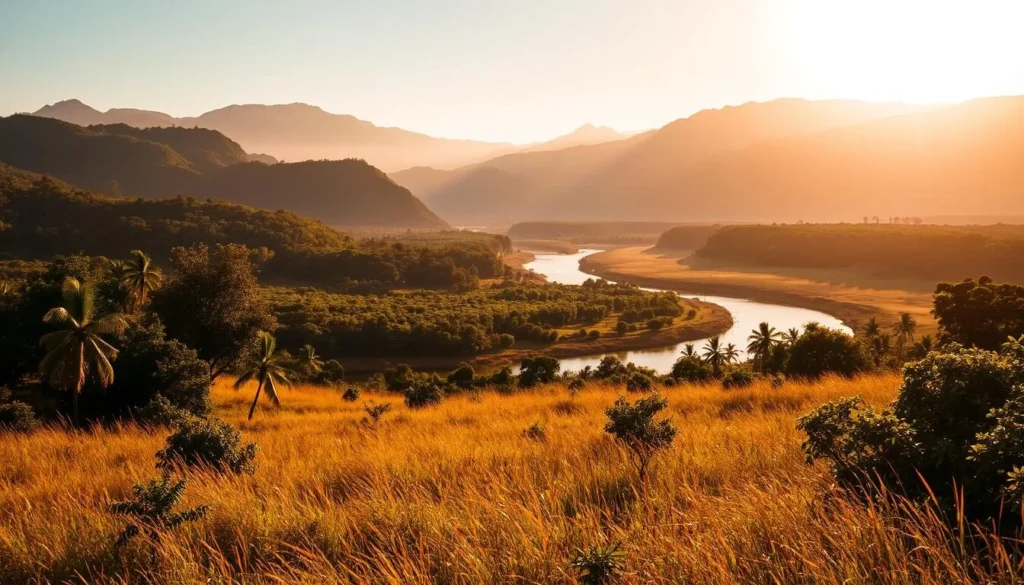
| Month | Weather Conditions | Activities |
|---|---|---|
| May | Transition to dry season | Trekking, cultural events |
| June-August | Peak dry season | Trekking, festivals, outdoor adventures |
| September-October | Dry and pleasant | Exploring remote areas, wildlife viewing |
November to April: Navigating the Wet Season
The wet season, from November to April, brings lush landscapes and fewer tourists but can present challenges such as flooded roads and limited access to certain regions. January and February typically experience the heaviest rainfall, making these months challenging for comprehensive exploration. However, this period can be rewarding for photographers capturing verdant landscapes.
- Lush landscapes and vibrant ecosystems
- Fewer tourists and more serene environments
- Potential challenges with transportation and access
Regional Weather Guide: When to Visit Where
To make the most of your trip to Papua New Guinea, it’s essential to understand the regional weather variations. The country’s diverse geography means that weather conditions differ significantly across various regions.
Coastal Areas and Port Moresby
Port Moresby and other coastal areas experience their driest period from June to October, with temperatures ranging from 24-32°C (75-90°F). This makes it an ideal time to visit these destinations.
Highland Regions and Mount Hagen
The Highlands, including Mount Hagen, are most accessible during the dry season (May-October). Trails are less muddy, and visibility is better for mountain views, making it a great destination for trekking.
Island Provinces: New Britain, New Ireland, and Bougainville
Island provinces have their own microclimate patterns. For example, New Britain’s north coast is driest from June to October. Understanding these variations helps you plan your trip according to the best weather conditions.
| Region | Best Time to Visit | Weather Conditions |
|---|---|---|
| Coastal Areas and Port Moresby | June to October | Dry, 24-32°C (75-90°F) |
| Highland Regions and Mount Hagen | May to October | Dry, less muddy trails |
| Island Provinces | Varies by island | Microclimate patterns |

By understanding these regional weather patterns, you can plan a trip that follows the best weather across different parts of the country.
The Dry Season Experience (May-October)
The dry season in Papua New Guinea is characterized by clear skies and comfortable temperatures, making it the best time to visit. This period, which spans from May to October, offers ideal conditions for outdoor activities and cultural exploration.
Weather Conditions and What to Expect
During the dry season, you’ll experience clearer skies, reduced humidity, and more predictable weather patterns. Daytime temperatures typically range from 25-30°C (77-86°F) in coastal areas, while highland regions enjoy pleasant 20-25°C (68-77°F) days with cooler evenings.

Pros and Cons of Visiting During Dry Months
The dry season coincides with peak tourist season, meaning popular sites will have more visitors and potentially higher prices. However, this is also the best time for hiking adventures and cultural festivals, offering unique experiences.
Best Dry Season Activities and Destinations
This is the ideal time for hiking the famous Kokoda Track, as trails are less slippery and river crossings are safer. You can also enjoy cultural festivals and sing-sings, and experience excellent wildlife viewing in national parks and nature reserves. Some of the top activities include:
- Hiking and trekking in the highlands and along the Kokoda Track
- Participating in cultural festivals and sing-sings
- Wildlife viewing in national parks
Overall, the dry season offers a great experience for visitors, with comfortable weather and a range of exciting activities.
The Wet Season Experience (November-April)
Traveling to Papua New Guinea during the wet season can be a rewarding experience, with fewer tourists and lush landscapes making it an attractive time to visit. The wet season, which runs from November to April, brings significant changes to the country’s weather and conditions.
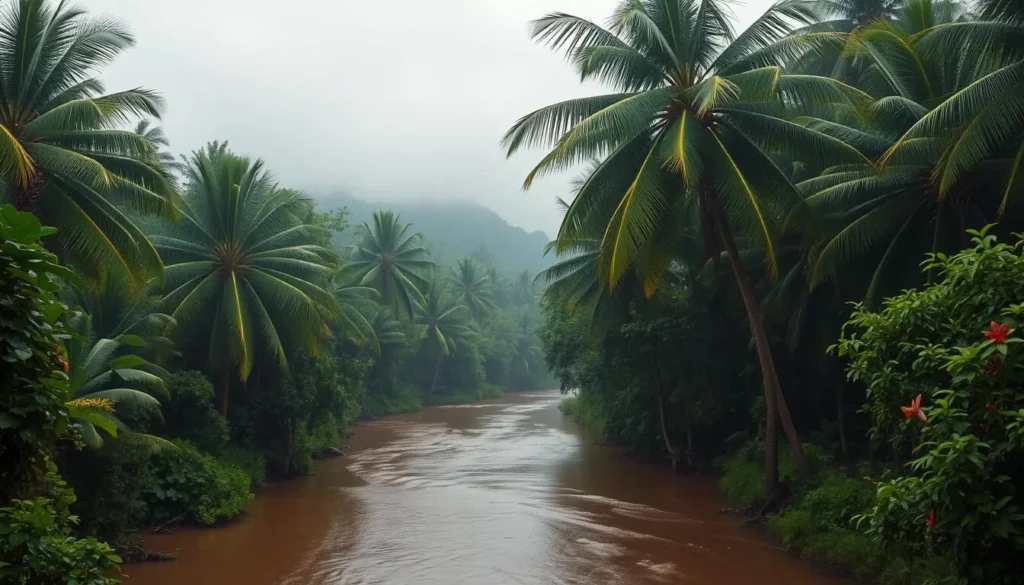
Weather Patterns and Rainfall Expectations
The wet season is characterized by dramatic afternoon thunderstorms, increased humidity, and substantial rainfall. Coastal areas and the highlands receive the heaviest rainfall, often exceeding 200mm (8 inches) per month. However, some highland valleys experience a rain shadow effect, moderating precipitation even during the wet months.
Advantages and Challenges of Wet Season Travel
Despite the challenging weather conditions, traveling during the wet season offers several advantages. You’ll encounter fewer tourists, potentially enjoy discounts on accommodations, and experience a more authentic daily life in Papua New Guinea. However, you may face challenges such as potential flight delays or cancellations, impassable roads in remote areas, and an increased risk of malaria in lowland regions.
Recommended Wet Season Activities and Locations
Certain activities actually improve during the wet season. Rivers like the Sepik become more navigable, rainforests burst with life, and birdwatching opportunities expand as species become more active. The lush landscapes, flowing waterfalls, and dramatic cloud formations over mountains make Papua New Guinea a photographer’s paradise during this time.
Shoulder Seasons: The Best of Both Worlds
Papua New Guinea’s shoulder seasons provide a compelling middle ground for travelers seeking comfortable weather and smaller crowds. During these periods, you can enjoy a more relaxed pace and better value for your travel dollar.
April-May: Transitioning to Drier Days
As the wet season recedes, April and May bring gradually decreasing rainfall, resulting in vibrant landscapes without the heaviest downpours. Wildlife viewing is exceptional during this transition, with abundant vegetation and active animals. You can enjoy local festivals and events without the tourist crowds, providing authentic cultural experiences.
October-November: Before the Heavy Rains
October and November offer generally favorable conditions before the onset of the heaviest rains. The occasional showers create lush scenery, and you can still access most attractions and activities. These months often provide better value for accommodations and tours, making them an attractive time to visit. With fewer tourists, you can experience cultural activities and natural attractions with more flexibility.
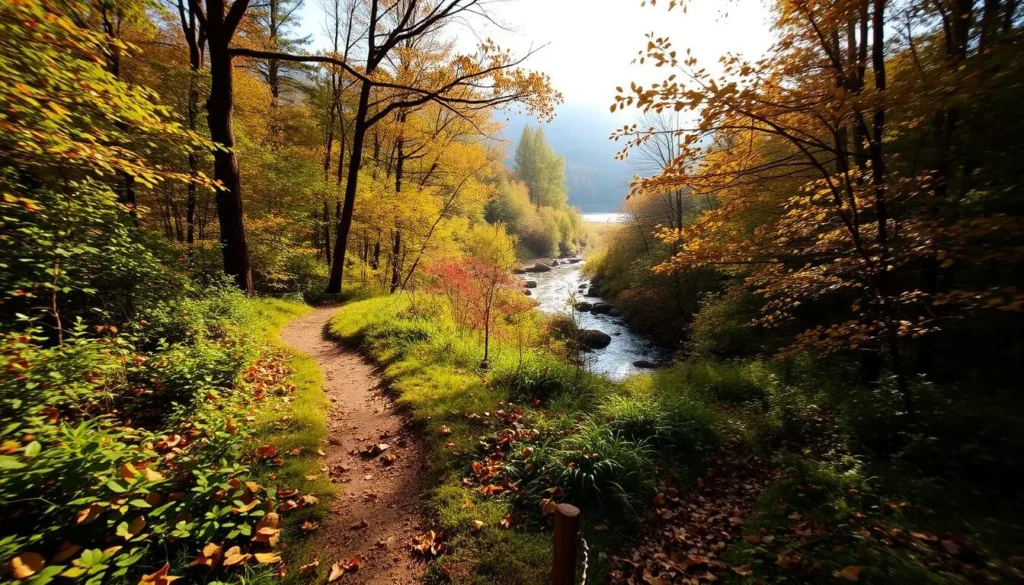
Cultural Festivals and Seasonal Highlights
Papua New Guinea is a land of vibrant culture, where festivals and natural phenomena create unforgettable experiences. You can immerse yourself in the local culture by attending one of the many cultural festivals held throughout the year.
Traditional Celebrations Worth Planning Around
Papua New Guinea offers unique cultural experiences through its vibrant festivals that showcase traditional dance, music, and elaborate costumes. Some of the notable festivals include:
- The Goroka Show in September, featuring over 100 tribes and an extraordinary display of traditional dress, dance, and music.
- The Mount Hagen Cultural Show in August, presenting tribal gatherings that have been celebrated for decades.
- The Mask Festival in Rabaul in July, celebrating the region’s famous Dukduk and Tubuan masked traditions.
- The Crocodile Festival in August, honoring the cultural significance of crocodiles to the Sepik River communities.
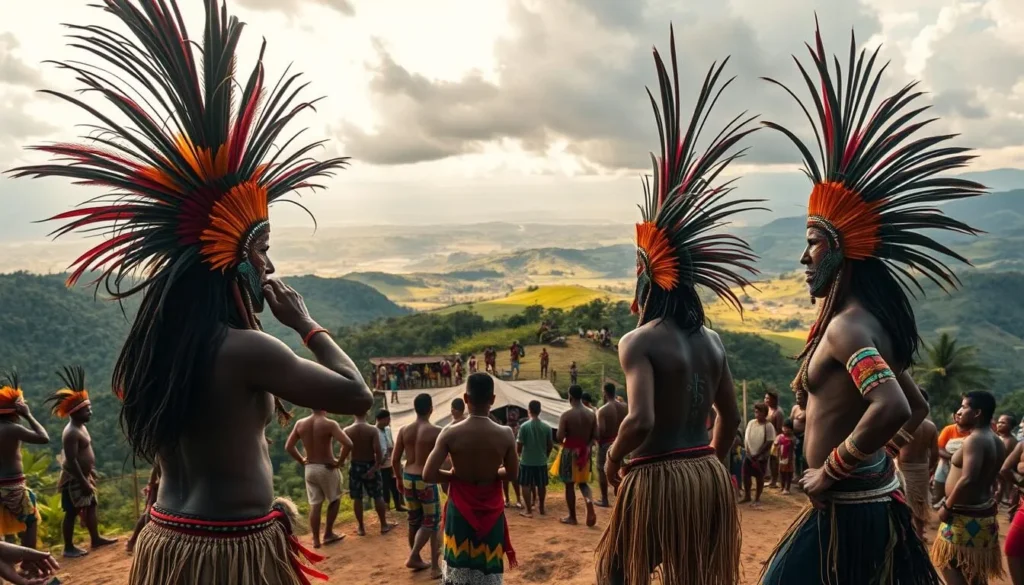
Seasonal Natural Phenomena and Wildlife Viewing
The country is also home to various seasonal natural events worth planning around. These include:
- Turtle nesting seasons on coastal beaches from November to February.
- Peak orchid blooming periods in the highlands from April to June.
- Bird of paradise mating displays, predominantly in September and October.
By timing your visit to coincide with these events, you can have a truly unforgettable experience in Papua New Guinea.
Practical Travel Tips for Different Seasons
To make the most of your trip to Papua New Guinea, it’s essential to know the practical travel tips for different seasons. Understanding the climate and weather conditions will help you prepare accordingly.
What to Pack for Papua New Guinea’s Climate
Regardless of when you visit, lightweight, quick-drying clothing is essential. For highland regions, pack additional lightweight layers for cool evenings. During the wet season, waterproof gear becomes crucial, including a reliable rain jacket and waterproof bag covers.
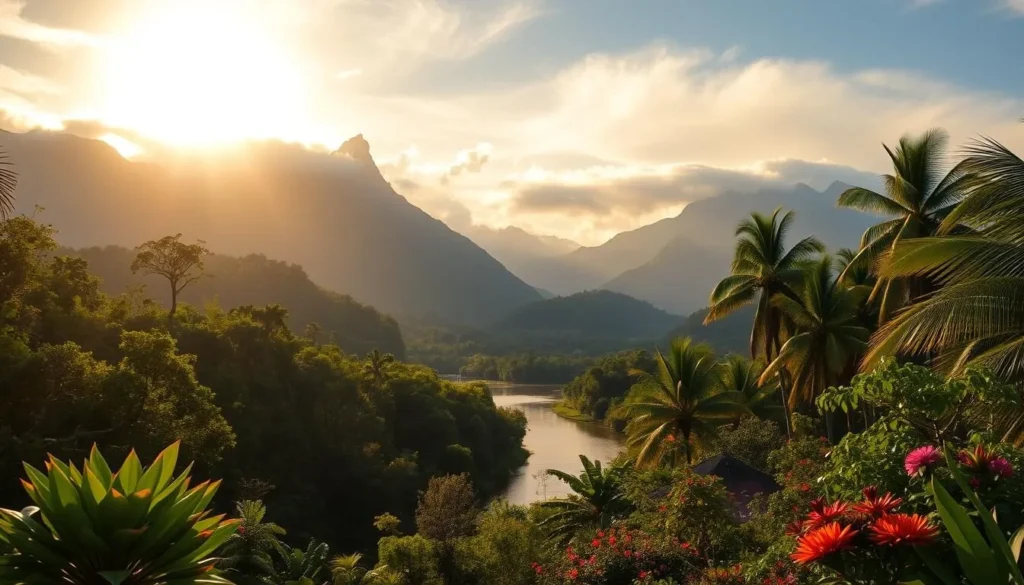
Health Considerations and Weather Precautions
Health considerations vary by season. During wet months, the risk of malaria increases, requiring appropriate prophylaxis. In contrast, the dry season demands vigilant sun protection and hydration. Be prepared for the weather conditions that may affect your health.
Transportation Challenges During Wet Seasons
Transportation challenges intensify during the wet season. Domestic flights may face cancellations, and rural roads can become impassable. Always build buffer days into your itinerary to accommodate such disruptions. As a traveler, being prepared for these challenges will ensure a smoother trip.
Accommodation Recommendations by Season
The season you choose to visit Papua New Guinea will significantly impact your accommodation options, ranging from urban hotels to eco-lodges. Understanding the seasonal variations in accommodation can help you make informed decisions for a comfortable and enjoyable trip.
Urban Lodging in Port Moresby and Major Towns
Port Moresby and other major towns in Papua New Guinea offer a variety of accommodation options, including international hotel chains and local guesthouses. During the peak season, from June to September, it’s advisable to book in advance as rates are higher and availability is limited. In contrast, the wet season brings more reliable comfort with backup generators for power outages, making urban accommodations a practical choice during this time.
Remote and Eco-Lodging Options
For a more authentic experience, remote eco-lodges and village stays are ideal, offering immersion in Papua New Guinea’s natural beauty and culture. However, their accessibility varies significantly with the season. The dry season is the best time to visit these remote accommodations, as access roads are passable and outdoor activities can be fully enjoyed. Some accommodations, like those in the Tari Valley or Sepik River, require advance booking, especially during the dry season.
- Coastal resorts adjust their offerings seasonally, with some dive sites accessible only during specific months.
- Remote eco-lodges may operate with limited services or close during the heaviest wet months.
- Some luxury accommodations offer discounts during the wet season, making them more accessible.
Weather-Based Activities and Adventures
From diving to hiking, the weather in Papua New Guinea is a crucial factor in planning your trip’s activities. The country’s diverse climate means that different activities are best enjoyed during specific times of the year.
Diving and Beach Activities: Timing Your Visit
Diving conditions in Papua New Guinea reach their peak from May to November, with underwater visibility often exceeding 30 meters. This period is ideal for exploring the country’s renowned reef systems and WWII wrecks.
Hiking and Mountain Exploration: Best Conditions
The dry season, from June to September, is the best time for tackling the Kokoda Track and other highland hiking trails, as paths are less slippery and river crossings are safer.
Cultural Immersion and Village Stays: Weather Considerations
Cultural immersion experiences are available year-round, but the dry season facilitates easier travel between communities and participation in outdoor ceremonies.
| Activity | Best Time | Weather Conditions |
|---|---|---|
| Diving | May-November | Optimal underwater visibility |
| Hiking | June-September | Dry conditions, safer river crossings |
| Cultural Immersion | Dry Season | Easier travel, outdoor ceremonies |
Conclusion: Planning Your Perfect Papua New Guinea Adventure
Whether you’re drawn to cultural festivals, outdoor adventures, or simply exploring the natural beauty of Papua New Guinea, choosing the right time to visit is key. The best time to visit Papua New Guinea ultimately depends on your specific interests, with the dry season (May-October) offering the most reliable conditions for a comprehensive travel experience across all regions.
For first-time visitors, planning your trip during the core dry months of June through August provides the best balance of accessibility, comfort, and opportunity to experience both natural and cultural highlights. Consider building your itinerary around specific events like the Goroka or Mount Hagen cultural shows if experiencing Papua New Guinea’s vibrant traditions is your priority.
Flexibility is key to a successful Papua New Guinea adventure, as weather patterns can be unpredictable. Working with experienced local operators can significantly enhance your travel experience, providing alternatives when weather disrupts original plans. Regardless of when you visit, Papua New Guinea rewards travelers with extraordinary cultural encounters and natural wonders.
To plan your trip effectively, consider the shoulder seasons or selective wet season months for better accommodation rates and fewer crowds. With the right planning, your time in Papua New Guinea will be unforgettable.
The above is subject to change.
Check back often to TRAVEL.COM for the latest travel tips and deals.
